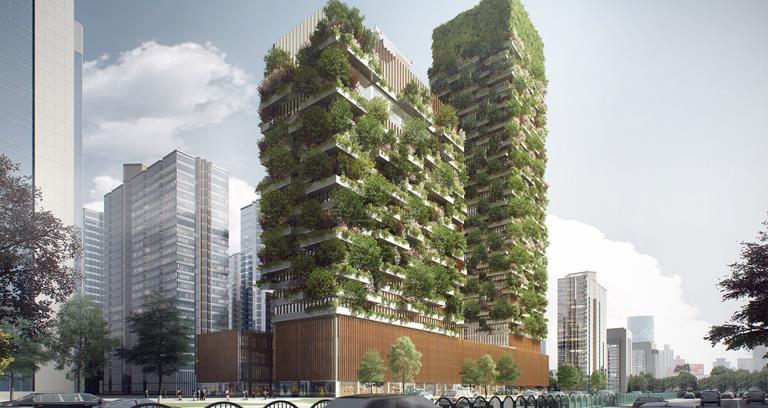In today’s world, where climate change looms large and environmental
consciousness is on the rise, the concept of sustainable and green buildings is
gaining significant traction. These structures are not merely architectural
marvels but are pivotal in shaping a more sustainable future. They are capable
of integrating energy-efficient technologies, utilizing renewable materials,
and embracing innovative design practices.
The Rise of Sustainability
The call for sustainable buildings stems from the urgent need to
mitigate climate change and reduce the carbon footprint of the built
environment as per Joe
Cianciotto. Buildings alone contribute
significantly to global energy use, greenhouse gas emissions, and resource
consumption. Sustainable buildings aim to minimize these impacts through
thoughtful design, efficient use of resources, and adoption of renewable energy
sources.
Key Features of Sustainable Buildings
Sustainable buildings incorporate several key features that distinguish
them from conventional structures:
- Energy Efficiency: These buildings
prioritize energy efficiency using technologies such as LED lighting,
efficient HVAC systems, and advanced insulation. They aim to reduce energy
consumption and lower operational costs over the building's lifetime.
- Renewable Energy: Integrating renewable
energy sources such as solar panels, wind turbines, or geothermal systems
is a hallmark of sustainable buildings. These systems generate clean
energy on-site, reducing reliance on fossil fuels and contributing to a
more resilient energy infrastructure.
- Water Efficiency: Sustainable buildings
employ water-efficient fixtures, rainwater harvesting systems, and
greywater recycling to minimize water consumption. This not only conserves
a precious resource but also reduces the burden on local water supplies as
said by Joe Cianciotto.
- Use of Sustainable Materials:
Sustainable buildings prioritize the use of materials with minimal
environmental impact. They deploy recycled steel and reclaimed wood to
eco-friendly insulation and low-impact building materials. This promotes
resource conservation and supports the circular economy.
- Natural Ventilation and Daylighting:
Maximizing natural light and ventilation reduces the need for artificial
lighting and mechanical cooling. This also enhances indoor air quality and
occupant comfort while lowering energy demands.
Benefits Beyond Environmental Impact
The advantages of sustainable buildings extend beyond environmental
stewardship:
- Improved Indoor Environmental Quality: By
using non-toxic materials and optimizing indoor air quality, these
buildings create healthier and more productive indoor environments for
occupants.
- Long-term Cost Savings: The initial costs of
sustainable building materials and technologies are high. However, their
operational efficiencies lead to substantial cost savings over time
through reduced energy and water bills.
- Enhanced Resilience: Sustainable buildings
are often more resilient to environmental changes and disruptions. This is
how they can offer greater stability and continuity in an uncertain
future.
Challenges and Opportunities
Despite the clear benefits, challenges remain in mainstreaming
sustainable building practices. These include initial cost barriers, regulatory
hurdles, and the need for specialized expertise. However, these challenges
present opportunities for innovation, collaboration among stakeholders, and
policy advancements that support sustainable development.
The Path Forward
As awareness of climate change grows and sustainability becomes a top
priority, the demand for sustainable and green buildings continues to rise.
Architects, engineers, developers, and policymakers are increasingly
collaborating to push the boundaries of sustainable design and construction.
By embracing energy-efficient technologies, utilizing renewable
resources, and adopting holistic design principles, sustainable buildings not only
reduce environmental impact but also pave the way for a more resilient and
equitable built environment. They represent a tangible commitment to
safeguarding our planet and ensuring a sustainable legacy for future
generations.
According to Joe
Cianciotto, sustainable
and green buildings are not just structures and thus considers them to be
beacons of innovation and hope in the face of global environmental challenges.
As we move towards a more sustainable future, these buildings serve as
inspiring examples of what can be achieved when creativity, technology, and
environmental stewardship converge in architecture.
